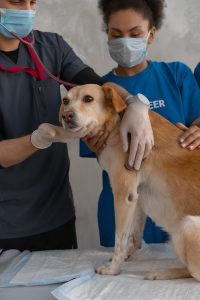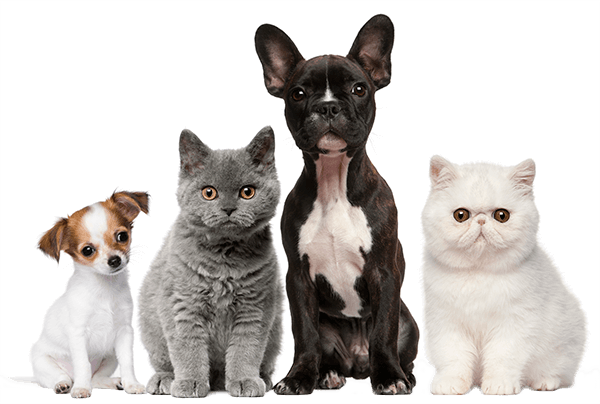
Healthy Smiles: Essential Pet Dental Care Tips for a Happy Pet
Pet dental care is an often overlooked aspect of pet health, but it is crucial for maintaining their overall well-being. Just like humans, pets can develop dental problems that can lead to other health issues if left untreated. Regular dental care, including brushing their teeth and providing dental treats and toys, can help prevent these problems and keep your pet’s teeth and gums healthy. In this article, we will discuss the importance of pet dental care, common dental problems in pets, how to recognize signs of dental problems, how to brush your pet’s teeth, choosing the right toothbrush and toothpaste, dental treats and toys for pets, regular dental check-ups, professional dental cleaning, home remedies for minor dental problems, and tips for maintaining your pet’s dental health.
Importance of Pet Dental Care
Pet dental care is not just about keeping your pet’s breath fresh; it is essential for their overall health and well-being. Dental problems in pets can lead to pain, infection, and even organ damage if left untreated. Poor oral hygiene can also affect their ability to eat and can cause weight loss or malnutrition. Additionally, bacteria from dental infections can enter the bloodstream and affect other organs such as the heart, liver, and kidneys.
Regular dental care can help prevent these issues and keep your pet healthy. By brushing their teeth regularly and providing them with appropriate dental treats and toys, you can remove plaque and tartar buildup and maintain their oral health. It is important to start dental care early in your pet’s life to establish good habits and prevent future problems.
Common Dental Problems in Pets
There are several common dental problems that pets can experience. One of the most common is periodontal disease, which affects the gums and supporting structures of the teeth. This disease is caused by a buildup of plaque and tartar on the teeth, which leads to inflammation and infection of the gums. If left untreated, periodontal disease can cause tooth loss and can even spread to other parts of the body.
Another common dental problem in pets is tooth decay. This occurs when the enamel on the teeth is damaged, allowing bacteria to enter and cause cavities. Tooth decay can be painful for pets and can lead to infection if not treated. Other dental problems that pets may experience include broken or fractured teeth, oral tumors, and gingivitis.
Signs of Dental Problems in Pets
It is important to be able to recognize the signs of dental problems in your pet so that you can seek treatment as soon as possible. One of the most common signs is bad breath, also known as halitosis. If your pet’s breath smells unusually foul, it may be a sign of dental disease. Other signs include difficulty eating or chewing, drooling, pawing at the mouth, bleeding or swollen gums, loose or missing teeth, and changes in behavior such as irritability or depression.
If you notice any of these signs, it is important to take your pet to the veterinarian for a dental examination. They will be able to determine the cause of the problem and recommend appropriate treatment.
How to Brush Your Pet’s Teeth
Brushing your pet’s teeth is an important part of their dental care routine. It helps remove plaque and tartar buildup and prevents dental problems. Here are some step-by-step instructions on how to brush your pet’s teeth:
1. Start by getting your pet used to having their mouth touched. Gently lift their lips and touch their teeth and gums with your fingers.
2. Introduce them to the taste of toothpaste by letting them lick a small amount off your finger.
3. Once they are comfortable with this, you can start using a toothbrush specifically designed for pets. These brushes have soft bristles and a long handle to make it easier to reach all areas of your pet’s mouth.
4. Apply a small amount of pet toothpaste to the brush and gently brush your pet’s teeth in a circular motion. Focus on the outer surfaces of the teeth, as this is where plaque and tartar tend to accumulate.
5. Be patient and take breaks if needed. It may take some time for your pet to get used to having their teeth brushed.
6. Reward your pet with praise or a treat after each brushing session to make it a positive experience.
 Choosing the Right Toothbrush and Toothpaste
Choosing the Right Toothbrush and Toothpaste
When it comes to choosing a toothbrush and toothpaste for your pet, there are several options available. For toothbrushes, you can choose between traditional brushes with bristles or finger brushes that fit over your finger. Finger brushes can be easier to use, especially for smaller pets or those who are not used to having their teeth brushed.
When it comes to toothpaste, it is important to use a toothpaste specifically designed for pets. Human toothpaste contains ingredients that can be toxic to animals if swallowed. Pet toothpaste comes in a variety of flavors that are appealing to pets, such as poultry or beef. This can make the brushing experience more enjoyable for them.
When choosing a toothbrush and toothpaste, consider your pet’s size and preferences. If you have multiple pets, it may be helpful to have different brushes and flavors for each one.
Dental Treats and Toys for Pets
In addition to brushing your pet’s teeth, providing them with dental treats and toys can help keep their teeth clean and healthy. Dental treats are specially formulated to help remove plaque and tartar buildup as your pet chews on them. They often have a chewy texture that helps scrape away plaque from the teeth.
Dental toys are another great option for maintaining your pet’s dental health. These toys are designed to be chewed on and can help remove plaque and tartar. Look for toys that have ridges or bumps that can help clean your pet’s teeth as they chew.
When choosing dental treats and toys, it is important to consider your pet’s size and chewing habits. Make sure to choose treats and toys that are appropriate for their size and breed. It is also important to supervise your pet while they are chewing on treats or toys to prevent choking or swallowing large pieces.
Regular Dental Check-Ups for Pets
Regular dental check-ups are an important part of your pet’s dental care routine. During these check-ups, a veterinarian will examine your pet’s teeth and gums for any signs of dental disease or other problems. They may also perform a dental cleaning if necessary.
It is recommended to have your pet’s teeth checked by a veterinarian at least once a year. However, some pets may require more frequent check-ups depending on their age, breed, and overall health. Your veterinarian will be able to recommend the appropriate schedule for your pet.
During a dental check-up, the veterinarian will examine your pet’s teeth and gums for any signs of disease or other problems. They may also take x-rays to get a closer look at the teeth and roots. If necessary, they may recommend a professional dental cleaning to remove plaque and tartar buildup.
Professional Dental Cleaning for Pets
A professional dental cleaning, also known as a dental prophylaxis, is a more thorough cleaning of your pet’s teeth performed by a veterinarian. This procedure is done under anesthesia to ensure that your pet is comfortable and to allow the veterinarian to clean all surfaces of the teeth.
During a professional dental cleaning, the veterinarian will remove plaque and tartar from the teeth using specialized tools. They will also polish the teeth to remove any remaining plaque and smooth the tooth surfaces to prevent future plaque buildup. If necessary, they may also extract any loose or damaged teeth.
Professional dental cleanings are typically recommended for pets with moderate to severe dental disease or for those who are unable to tolerate regular brushing. Your veterinarian will be able to determine if your pet needs a professional cleaning and will provide you with more information about the procedure.
Home Remedies for Pet Dental Problems
While professional dental care is important for treating dental problems in pets, there are also some home remedies that can help alleviate minor issues. These remedies should not replace veterinary care, but they can provide temporary relief until you are able to take your pet to the veterinarian.
One home remedy for minor dental problems is coconut oil. Coconut oil has antibacterial properties that can help reduce inflammation and fight infection. You can apply a small amount of coconut oil to your pet’s gums using a cotton swab or your finger. Be sure to use organic, unrefined coconut oil.
Another home remedy is apple cider vinegar. Apple cider vinegar has antimicrobial properties that can help kill bacteria in the mouth. You can mix a small amount of apple cider vinegar with water and use it as a mouth rinse for your pet. Be sure to dilute the vinegar and avoid getting it in their eyes or nose.
It is important to note that these home remedies should only be used for minor issues and should not replace professional veterinary care. If your pet is experiencing severe dental problems, it is important to seek treatment from a veterinarian.
Tips for Maintaining Your Pet’s Dental Health
In addition to regular brushing, there are several other tips you can follow to maintain your pet’s dental health:
1. Feed them a healthy diet: A balanced diet that is rich in nutrients can help support your pet’s dental health. Avoid feeding them sugary or sticky foods that can contribute to plaque buildup.
2. Avoid certain types of treats: Some treats, such as hard bones or antlers, can cause tooth fractures or other dental problems. Choose treats that are specifically designed to promote dental health.
3. Provide plenty of water: Drinking water helps rinse away food particles and bacteria from your pet’s mouth. Make sure they have access to fresh water at all times.
4. Regularly inspect their teeth and gums: Take the time to look inside your pet’s mouth and check for any signs of dental problems. If you notice anything unusual, consult with your veterinarian.
5. Consider professional dental cleanings: Even with regular brushing, some pets may still require professional dental cleanings to remove stubborn plaque and tartar. Talk to your veterinarian about whether this is necessary for your pet.
6. Be patient and consistent: It may take some time for your pet to get used to having their teeth brushed. Be patient and consistent with your dental care routine, and eventually, it will become a normal part of their routine.
Pet dental care is an important aspect of their overall health and well-being. Regular dental care, including brushing their teeth, providing dental treats and toys, and regular check-ups with a veterinarian, can help prevent dental problems and keep your pet’s teeth and gums healthy. By recognizing the signs of dental problems and taking appropriate action, you can ensure that your pet maintains good oral health throughout their life. Remember to consult with your veterinarian for specific recommendations for your pet’s dental care routine.
If you’re looking for more information on pet dental care tips, be sure to check out this helpful article from Furever Friends Veterinary Clinic. They provide valuable insights and advice on how to maintain your pet’s oral health and prevent dental issues. From brushing techniques to choosing the right dental products, this article covers it all. Don’t miss out on this essential read for every pet owner! Click here to access the article and give your furry friend the best dental care they deserve.
FAQs
What is pet dental care?
Pet dental care refers to the practice of maintaining good oral hygiene in pets, including regular brushing, dental check-ups, and professional cleaning.
Why is pet dental care important?
Pet dental care is important because it helps prevent dental diseases such as periodontal disease, tooth decay, and bad breath. These conditions can cause pain, discomfort, and even lead to more serious health problems.
How often should I brush my pet’s teeth?
You should aim to brush your pet’s teeth at least once a day. However, if this is not possible, aim for at least three times a week.
What kind of toothbrush should I use for my pet?
You should use a toothbrush specifically designed for pets. These toothbrushes have softer bristles and are designed to fit comfortably in your pet’s mouth.
Can I use human toothpaste on my pet?
No, you should never use human toothpaste on your pet. Human toothpaste contains ingredients that can be harmful to pets if ingested. Instead, use toothpaste specifically designed for pets.
What are some signs that my pet may have dental problems?
Some signs that your pet may have dental problems include bad breath, swollen or bleeding gums, loose or missing teeth, and difficulty eating.
How often should my pet have a dental check-up?
Your pet should have a dental check-up at least once a year. However, if your pet has a history of dental problems, your veterinarian may recommend more frequent check-ups.
What is involved in a professional dental cleaning for pets?
A professional dental cleaning for pets involves a thorough cleaning of your pet’s teeth and gums, including scaling, polishing, and sometimes extractions. This is typically done under anesthesia to ensure your pet’s safety and comfort.





